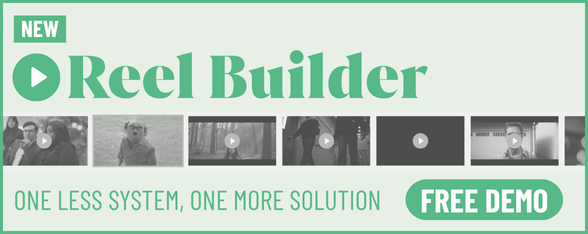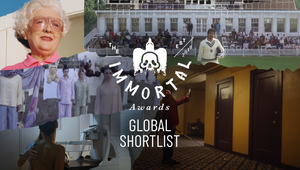
Klaartje Galle’s on the Wake up Call That Changed Her Career

Klaartje Galle is the creative leader at VML Belgium, where she combines creativity, commercial success, and positive social impact in every campaign. She’s known for crafting ideas that connect with clients on a deeper level, all while driving her team to do their best work through listening and understanding their needs.
With over 150 awards to her name, including Cannes Lions and Eurobest, she’s proven her ability to make an impact both creatively and commercially.
She began her career as a designer in 2000, transitioning to art director at BBDO in 2003, where she remained for 18 years. She later joined Accenture Song Belux and today serves as chief creative officer at VML Belgium. Her broad experience across different advertising sectors has shaped her unique approach to connecting brands and people through creativity.
Focus on the problem, not just the output. Great work doesn’t exist for its own sake – it exists to solve something real.
It was the early 2000s. I was in my 20s, a few years into the industry and working at BBDO as a young creative. I had a growing portfolio and plenty of ambition. I was proud of the work I was putting out – sharp, polished, attention-grabbing. Looking back, I was confident and eager to prove myself. I felt like I was on the right track, even if I hadn’t yet figured out the deeper layers of the craft.
This advice came from someone I never expected: a creative director from another agency. One of those directors I genuinely respected. That day, I thought it would be a casual portfolio presentation. I’d just wrapped a big project and thought I’d get a little validation – maybe even a compliment or two. Instead, I got a wake-up call.
He looked at me and said, “You’re making beautiful stuff. But are you fixing anything?” It felt like a cold shower. At that age, you think you’re invincible. You’re not prepared for someone to gently – and accurately – call out your ego. But he wasn’t being cruel. He was being honest. And that made all the difference.
What’s funny is, I’ve never told him how much that stuck with me. We still keep in touch, still swap achievements, still low-key compete.
It struck such a chord with me because he was right. Up to that point, I was obsessed with cool and aesthetic. I wanted people to talk about the campaign, the concept, the visual punch. And sure, there’s value in that. But I wasn’t really focused on the truth. On solving the actual brief. On impact. And deep down, I knew it. That’s what made it sting – and stick.
It changed everything. From then on, every project began and ended with one question: What’s the real problem we’re solving? It wasn’t about ‘Will this look great?’ but about ‘Is this going to make a difference?’
It changed the conversations I had with my teams. It changed how I approached briefs. And yes, sometimes the answers aren’t sexy. But they’re honest – and that honesty leads to better, sharper work. It wasn’t the easiest shift to make, especially when you’re young and your confidence is tied up in aesthetics. But it made me more intentional. More grounded. And, ultimately, better.
Honestly, it’s only grown more valuable with time. Early on, you think truth limits creativity. That ‘solving the problem’ sounds like client-speak, like it’ll water down the magic. But it’s the opposite. Truth gives your work weight. It makes it land. No visual effect or clever line can replace the power of relevance and real insight.
People don’t remember ads because they’re cool. They remember them because they hit something real. That’s what ‘fixing it’ means. And now, whenever I share this thinking with younger creatives, I can see the same shift start in them too. Some get it immediately. Some take a while. But eventually, it clicks. And when it does, everything changes.















